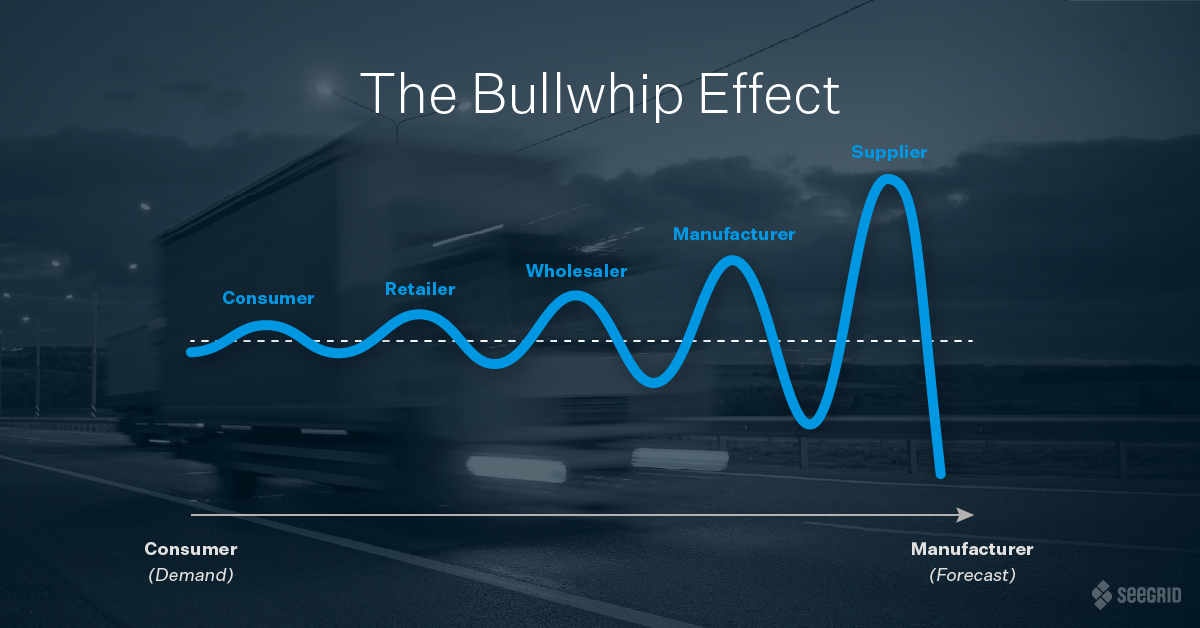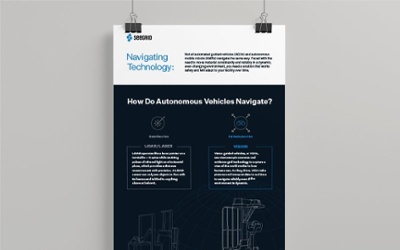The worldwide COVID-19 pandemic began a wave of panic buying and stockpiling, as many consumers want to make sure there are no shortages of essential items in their homes. Whether it's toilet paper, hand sanitizer, cleaning products, or nonperishable food items, stores all over the world are struggling to keep these items in stock. Many retailers are currently left with empty shelves, leading them to implement limits on how many of these essential items an individual can buy as inventory is received.
For supply chains, the unforeseen, enormous spike in demand caused by panic buying is introducing the challenge of balancing the bullwhip effect. The bullwhip effect occurs when there is a drastic shift in consumer demand which causes the supply chain to order more goods to fulfill the new demand level. This extreme swing in demand is magnified as it moves upstream in the supply chain, typically starting with the retailer, wholesaler, distributor, then manufacturer, either ordering too much or too little based on the current consumer demand patterns.
With real-time demand levels significantly increased, supply chains will likely increase quantities to combat chances of running out of products again. However, this could result in excess inventory once the demand tapers off. Since consumers are stockpiling the items and not necessarily consuming more, there won’t be a need to purchase more in the coming months, leaving stores — and their supply chain counterparts upstream — with excess inventory and reduced demand. In order to avoid creating disruptions and bottlenecks or being left with excess stock, supply chains must be agile enough to forecast and deliver inventory at the right quantities to the right places at the right time.
Consumer Stockpiling Causes Classic Bullwhip Effect
The bullwhip effect can be caused by a number of circumstances, such as seasonal cycles creating peak demand, wildly popular new product introductions, and even the unforeseen, just like the disruption caused by the COVID-19 pandemic. A primary factor to a bullwhip effect occurring is the lack of visibility. Without end-to-end visibility across the entire supply chain or real-time demand data, the retailer isn’t able to provide steady inventory at the speed needed to replenish the boosted demand. Supply chains need to be both informed and agile in order to forecast and deliver goods at the correct frequency. Unfortunately, especially in unforeseen circumstances, instead of relying on objective data points, many supply chains end up forecasting their best guess, with individuals making their own judgements regarding needed quantities.
Using Automation to Solve Supply Chain Shortages
Supply chain visibility is a common pain point for many companies regardless of fluctuating demand levels. The extreme conditions surrounding the COVID-19 pandemic have only amplified this pre-existing issue. However, visibility can be improved by implementing automation, creating connected facilities that can adapt to extreme situations to resist the unexpected — and costly — shock. Automation not only improves end-to-end visibility by providing objective communication throughout the supply chain with real-time data, but it also allows facilities to become more agile.
Agility is the ability to understand and respond quickly to rapidly changing disruptions in market dynamics and within the workflow. Efficiently being able to access and understand reliable data provides transparency across the entire supply chain for informed decision-making, while also giving added flexibility to deal with the unexpected to ensure a steady flow of goods.
Combining transparent information flow with smooth material flow has the potential to net substantial performance improvements. Some automation options, like Seegrid’s smart solutions, provide the ability to easily scale up or down to meet changing demand and new circumstances. If the data indicates a shift in demand levels, Seegrid Palion autonomous mobile robots (AMRs) can easily be retrained to new routes, facilities, and tasks, or more Palion AMRs can be deployed to efficiently and safely boost productivity. The robots also increase throughput, as they can continue operating 24/7 despite common challenges like labor shortages. Reliable vision technology enables these next generation autonomous mobile robots to tackle challenging, ever-changing environments.
COVID-19: Planning for the New Normal
With the right technology in place, supply chains can overcome the disruptions caused by COVID-19. As the situation continues to rapidly evolve, facilities should plan for the new normal and preemptively strategize for the best and worst case scenarios. For example, think about what actions need to take place if areas are self-isolating for another month, two months, six months, or longer.
Connected supply chains utilizing automation can understand and adjust to fluctuating demand to minimize disruptions. The delivery of goods has never been more important — as long as supply chains are optimizing effectively and efficiently, consumers will have access to the essential goods they need, when they need them.






